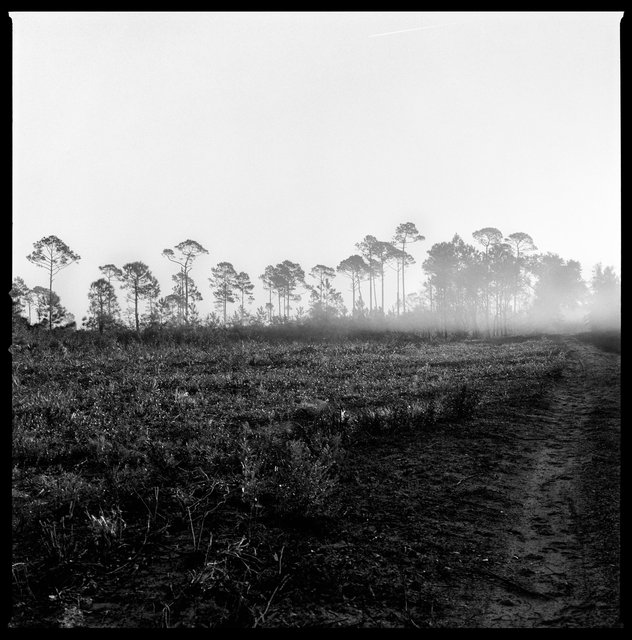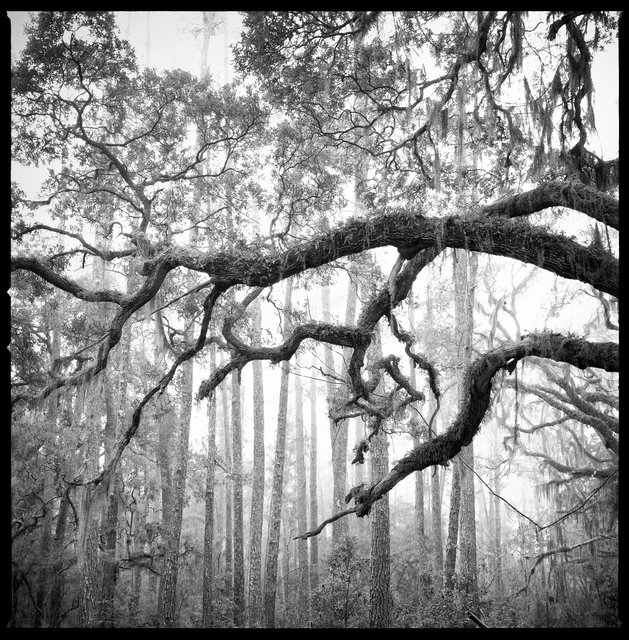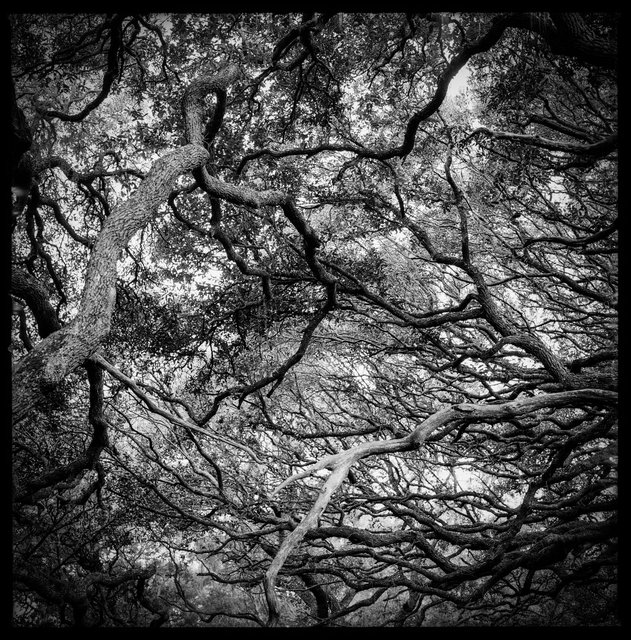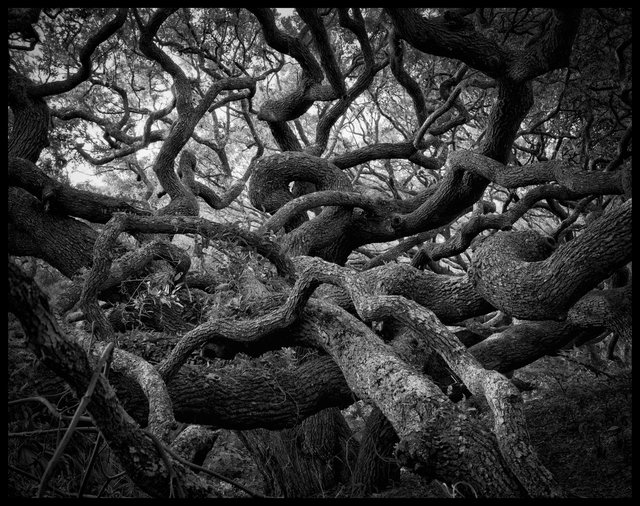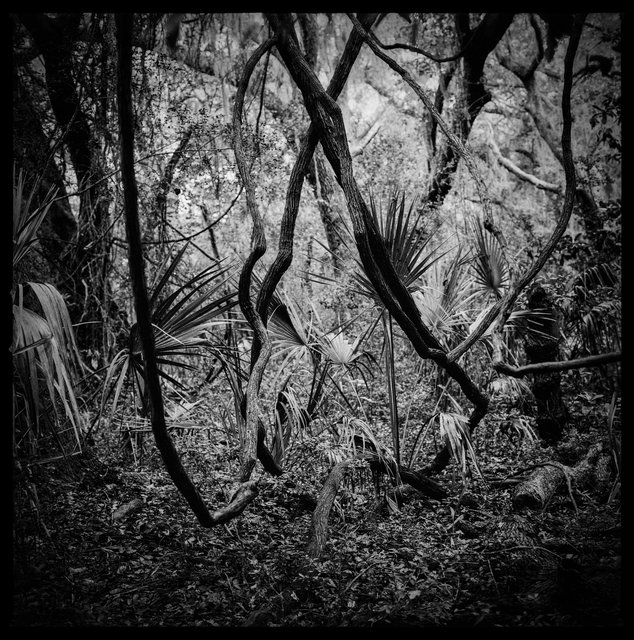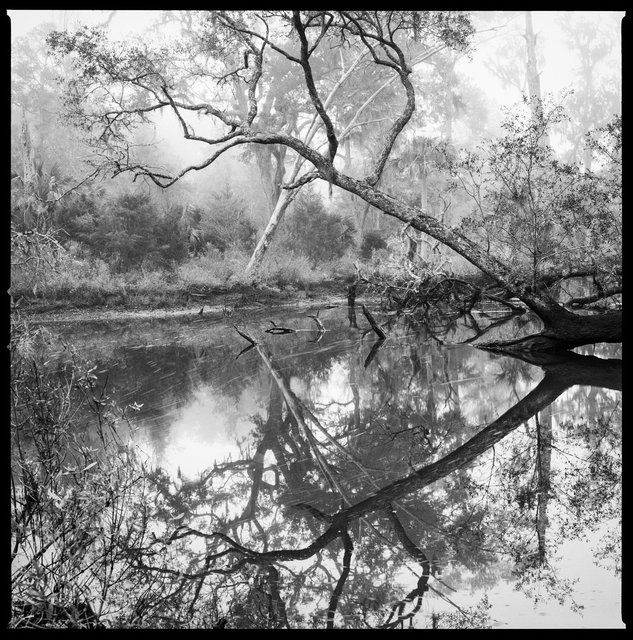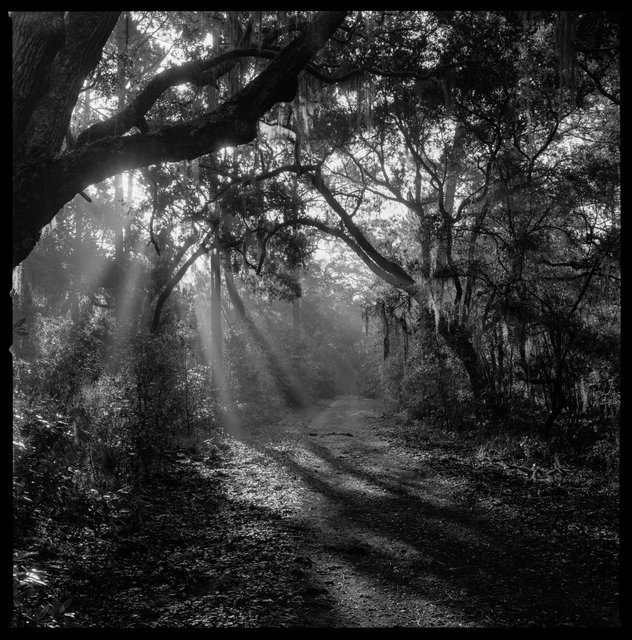Longleaf Pines and Fog, North Cut Road, 2016
Christa Bowden 16" x 16" Archival Pigment Print (24" x 24" framed)
Longleaf Pines and Live Oak, Old River Trail, 2016
Christa Bowden 16" x 16" Archival Pigment Print (24" x 24" framed)
Live Oak Canopy, Maritime Forest, North End, 2016
Christa Bowden 16" x 16" Archival Pigment Print (24" x 24" framed)
Octopus Tree, South Cut, 2017
Christa Bowden 20" x 25.5" Archival Pigment Print 30" x 36" (framed
Muscadine Vines in Maritime Forest, Dungeness, 2016
Christa Bowden 16" x 16" Archival Pigment Print (24" x 24" framed)
White Bridge Swamp Field Drain Creek, 2016
Christa Bowden 24" x 24" Archival Pigment Print (35" x 35" framed)
South Cut at Killman Field Trail, 2017
Christa Bowden 16" x 16" Archival Pigment Print (24" x 24" framed)
